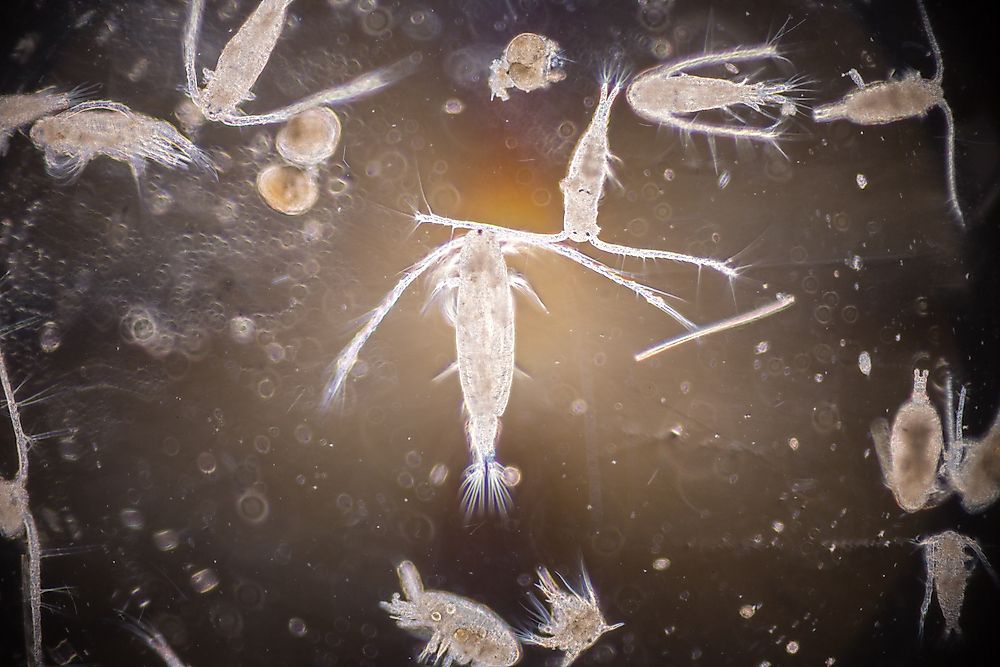What Is Vertical Migration?

Vertical migration is the movement of certain organisms such as zooplanktons either upwards or downwards in marine or fresh water. The vertical movement can be seasonal, ontogenic, or done in a cycle every 24 hours. However, plankton has to move along the water column to either obtain food from the surface of the water or to escape predators. The migration has a substantial impact on mesopredators and apex predators by modulating the accessibility of the prey.
Discovery of Vertical Migration
At the height of Second World War, researchers from University of California Division of War (UCDWR) found out that there were some echo-sounder that indicated unique reverberation. At first, they attributed it to water layer scattering agents or presence of an enemy’s submarine. As the US navy officers took sonar readings in the ocean, they would hear deep scattering layer (DSL). All the involved parties collaborated with biologists and discovered that the reverberations were related to diel vertical migration. The echo-sounder detected vertical movement of marine animals which could form dense groupings leading to the creation of a false sea bottom.
Types of Vertical Migration
There are three types of vertical migration namely diel, seasonal, and ontogenic.
Diel Migration
Diel is the most common form whereby organisms move daily through the depths of the water columns. Zooplanktons migrate nocturnally by ascending to water surface at dusk then descending to the depth of the water at dawn. There is a reverse migration where organisms ascend to water surface during the day and retreat to the depth of the water at the setting of the sun. The third form of diel migration though not common involves several ascents and descends in a single 24 hour period.
Seasonal Migration
Seasonal migration is whereby zooplanktons are found at different water depths depending on whether it is winter or summer while ontogenetic classification where organisms live in different depths at different stages in their life cycle.
Ontogenetic Migration
Ontogenetic migration is different from the pervious two in that it does not depend on daily or seasonal patterns. Ontogenetic migration, on the other hand, occurs during different life cycles of organisms whereby they live in different depths during particular cycles.
What Stimulates Vertical Migration?
Vertical migration can be influenced by either endogenous factors or exogenous factors. An endogenous contributor originates from within the organism while an exogenous factor is contributed by the environment. Examples of endogenous factors are biological rhythms that are dictated by the biological clock, sex of the organism, or the body size in relation to predation risk. Examples of exogenous stimuli are salinity changes, light and oxygen availability, tidal pattern, sensing of kairomones from predators, gravity, and an atmospheric pressure.
Reasons For Vertical Migration
The main reasons for vertical migration are to avoid predators and to search for food. Zooplanktons will also migrate downwards during the day since a certain water gradient may be risky to reside. Energy conservation is another reason. Some zooplankton are very small and have high metabolic reactions. They can conserve energy by feeding in warm water and then retreat to cooler regions. Organisms can use the migration to locate food patches and avoid ultra-violet (UV) light. Marine microorganisms will also thrive more in less transparent water where they are the drivers of DVM (Diel Vertical Migration).
Impact of Unusual Events on Vertical Migration
Occurrence of an unusual event may alter the migration pattern drastically. An example is instances where the sun appears at midnight in the arctic thereby affecting planktonic 24-hour migration pattern. During summer, some regions of the earth experience longer sunlight days. The occurrence of a solar eclipse leads to drastically decreased intensity of light and being daytime, the zooplanktons migration pattern is affected.











